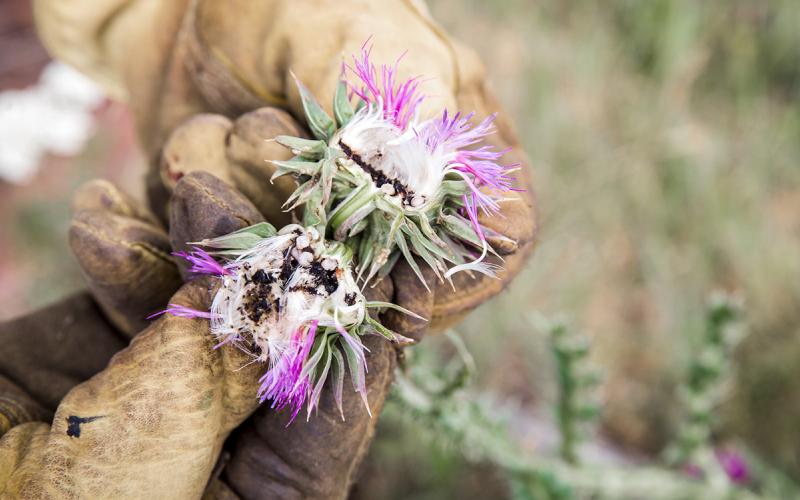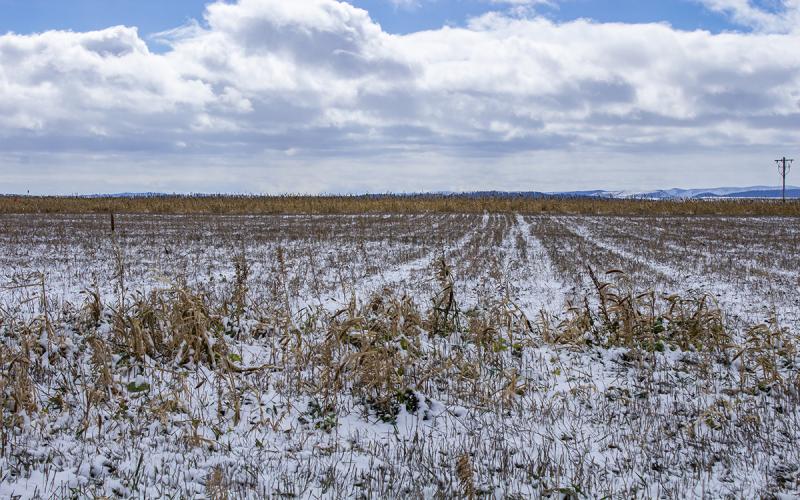
Written collaboratively by Eric Jones, Philip Rozeboom, Jill Alms, and David Vos.
While dicamba labels (i.e., Engenia, Tavium, and Xtendimax) for over-the-top applications for tolerant soybeans have been pulled for the 2025 growing season, the herbicide can still be applied in other crops. Below is a guideline for dicamba use in various crops.
Dicamba should not be applied to any crop when daytime temperatures are to exceed 85 F, wind speeds are below 5 or above 10 mph, and if a temperature inversion is present. Refer to the South Dakota State University Mesonet for weather data in your locale and consult the spray tool if conditions are appropriate for spraying. Be mindful of susceptible crops and plants adjacent to the area to be sprayed with dicamba.
Soybean
While the tolerant varieties cannot be sprayed over-the-top with previously registered dicamba labels, the herbicide can still be applied for specific applications. Dicamba products (i.e., Banvel, Clarity, Sterling Blue, others) can be applied preplant in soybean. This application is especially useful to manage winter annuals in no-till fields. Additionally, this application is effective to manage early emerging kochia and provide residual activity to manage later emerging kochia. The planting restriction is based off rate; following application, a minimum rainfall of 1 inch and a 14-day interval for 8 fl oz per acre or less; or a 28-day interval for 16 fl oz per acre is required before planting.
Corn
Corn has good tolerance to dicamba until 8 inches tall or the 5-leaf stage. Later applications can be made as post directed spray to 8-36-inch-tall corn or no later than 15 days before tassel (whichever occurs first). Dicamba is effective on many broadleaf weeds. Specific dicamba products (Status or Distinct) contain an auxin transport inhibitor, diflufenzopyr, to increase effectiveness and are applied at lower rates compared to other dicamba labels. Status is only labeled for postemergence applications while Distinct is only labeled for preplant applications. Other dicamba products can be applied preemergence on corn as well. Dicamba applied preemergence is effective during dry conditions due to the high-water solubility of the herbicide.
Wheat
Dicamba is applied in spring and winter wheat to manage broadleaf weeds, specifically wild buckwheat and kochia. Both spring and winter wheat can be injured by dicamba if applied at the incorrect growth stage. Apply to winter wheat in the spring before the jointing stage. Dicamba must be applied to spring wheat at the 3- to 4-leaf stage. Use rate in wheat is much lower (2 to 4 fl oz per acre) compared to corn (8 to 16 fl oz per acre).
Sorghum
Dicamba can be applied early preplant and postemergence in sorghum. Early preplant applications must be made at least 15 days before planting. Postemergence applications should be applied between the 3- to 5-leaf stage (approximately 25 days after planting) to avoid injury. Drop nozzles can be used once sorghum plants are 8 inches tall but do not apply once plants are 15 inches tall. The dicamba use in sorghum is limited to 8 fl oz per acre.
Pasture and Rangeland
Dicamba can manage select annual and perennial broadleaf weeds in a pasture and rangeland setting. Woody plants can be treated with dicamba to suppress vegetative growth. The use of dicamba (8 to 32 fl oz) in pasture and rangeland is greater than other crops. Some labels have restrictions on slaughtering of meat animals 30 days after the last application. Restrictions for lactating dairy cows and hay harvest after application can be found in Table 1.
| Dicamba Rate4L/A | Days before Grazing | Days before Hay Harvest |
|---|---|---|
| 1 pt | 7 days | 37 days |
| 1-2 pt | 21 days | 51 days |
| 1-2 qt | 40 days | 70 days |
This guideline is to be used as a summary. Please refer to specific herbicide labels before application. Dicamba can be applied with other herbicides to increase the effectiveness, spectrum of weed control, and decrease selection pressure on herbicide-resistant weeds. Along with the specific herbicide labels, the South Dakota Pest Management Guides are a useful resource for determining dicamba use rates, application timing, and tank mix partners. The SDSU Extension Noxious Weed Control and Pasture and Rangeland Weed Control Guides are other useful resources as well.


